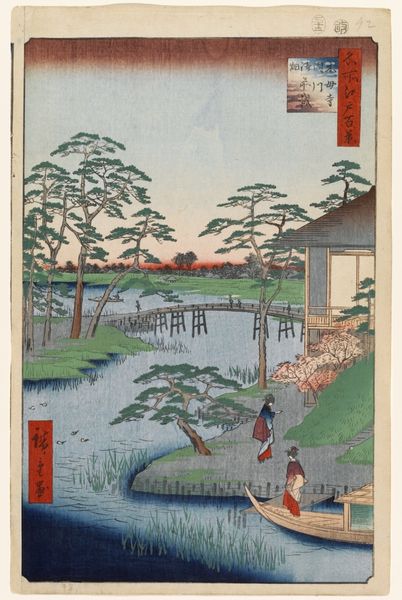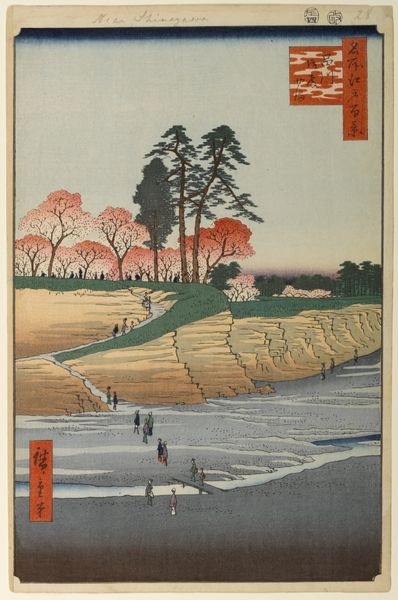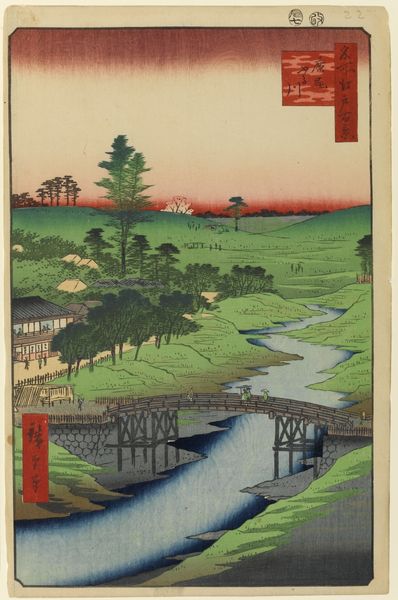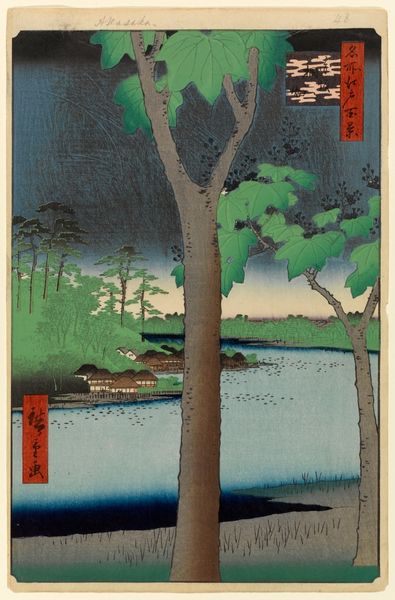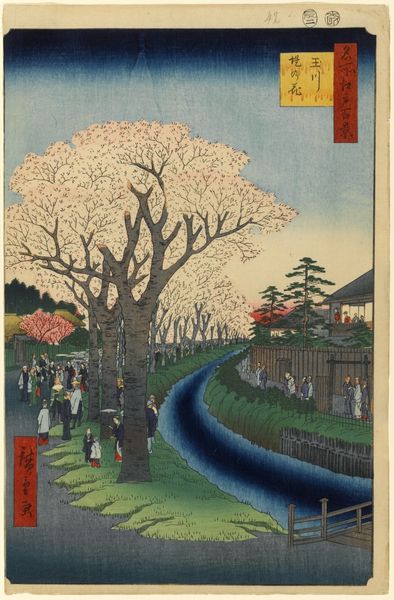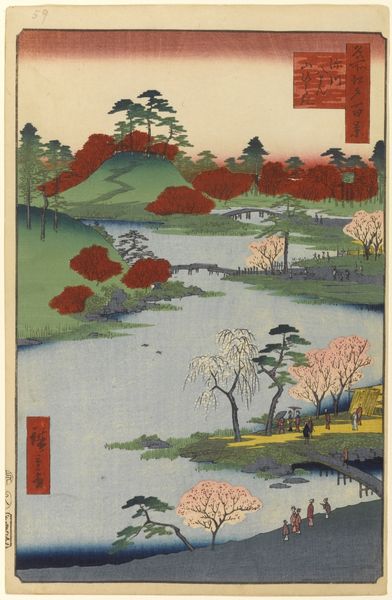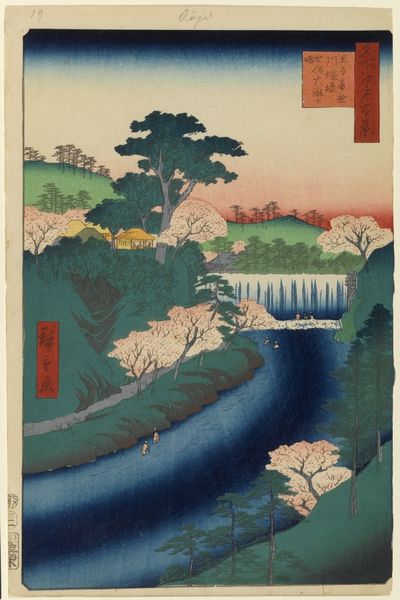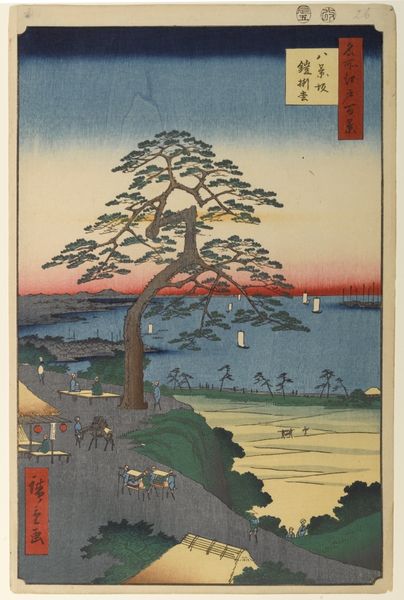
40. Bashō's Hermitage on Camellia Hill Beside the Aqueduct at Sekiguchi 1857
0:00
0:00
painting, print, watercolor
#
water colours
#
painting
# print
#
landscape
#
ukiyo-e
#
watercolor
#
coloured pencil
Copyright: Public domain
Utagawa Hiroshige's "Bashō's Hermitage on Camellia Hill Beside the Aqueduct at Sekiguchi" is a woodblock print that captures a serene landscape, inviting reflection on the relationship between nature and society in 19th-century Japan. During the Edo period, Japan experienced relative peace and economic growth, influencing a flourishing of arts and culture. The print showcases an idealized natural world, subtly juxtaposed with elements of human presence, such as the figures walking along the path and the hermitage nestled among the trees. This scene invokes the era's interest in leisure, travel, and the appreciation of scenic beauty. Hiroshige's work embodies the Japanese aesthetic of finding beauty in simplicity and impermanence, yet it also speaks to the complex relationship between humanity and nature. While seemingly bucolic, the aqueduct and the cultivated rice fields in the background remind us of human intervention, prompting reflection on our place within the natural world.
Comments
No comments
Be the first to comment and join the conversation on the ultimate creative platform.
